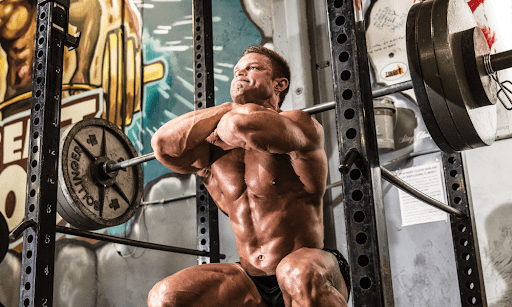

Strong legs are the foundation of a solid physique and a well-rounded fitness routine. They enhance your athletic performance in sports and activities such as sprinting, jumping, or lifting.
Incorporating leg exercises into your workout routine is crucial. A strong leg workout routine will build powerful quads, hamstrings, and glutes, and enhance your overall athletic performance. Leg workouts can also help you prevent injuries and improve your overall health. Having strong legs will help you maintain stability and mobility.
This guide details various exercises curated to target your quads, hamstrings, and glutes from every angle. From classic compound movements like squats and deadlifts to more isolated exercises like lunges and leg curls, learn the main workouts you need to be doing to strengthen your legs!
Leg Muscles
The leg muscles are primarily divided into two sections: the upper leg above the knee and the lower leg below the knee. The upper leg muscles include the quadriceps, hip flexors, and hamstring. The lower leg muscles are responsible for moving your ankle and foot. They have tibialis anterior, gastrocnemius, and soleus.
At the front of your upper leg lies the quadriceps. It consists of four different muscles: vastus lateralis, rectus femoris, vastus intermedius, and vastus medialis.
The quadriceps is the only muscle in your body that can straighten your knees, while the rectus femoris flexes or bends your hips. They are responsible for extending the knee and are highly involved in squats, lunges, and leg presses. It is also used during daily movements such as walking, kicking, standing from a chair, running, and jumping.
The hamstring muscles lie underneath the thighs, opposite quadriceps muscles. It consists of the biceps femoris, semitendinosus, and semimembranosus. Collectively they work together to flex the knee joint and aid in hip extension. They are actively engaged during exercises like deadlifts, lunges, and hamstring curls.
The hamstring muscles work with the quadriceps to control your leg movement and support your body. Strengthening these muscles is essential for enhancing athletic performance, preventing injuries, and maintaining balanced leg development.
The lower leg has two main muscles: the gastrocnemius and soleus. The gastrocnemius is the largest and most superficial muscle in the calf region. It forms the bulging shape often associated with well-developed calves. Soleus is located deep beneath the gastrocnemius.
Although not voluminous as the hamstring and quadriceps, the gastrocnemius and soleus muscles play a crucial role in plantar flexion and aid in maintaining balance and stability during various lower-body movements. For instance, they interconnect at the foot and ankle to enhance balance and stability. The gastrocnemius and soleus synergize to produce powerful movements and contribute to lower leg strength.
How Often Should You Work Out Your Leg Muscles?
The frequency of leg workouts depends on various factors, including your fitness goals, overall training program, and individual recovery capacity.
However, it is generally recommended to incorporate leg workouts into your training routine at least 2-3 times per week with at least a day of rest between sessions. Rest days allow your muscles enough time to repair and recover from the damage caused by working out, which is crucial for muscle growth and strength.
If you are a beginner seeking to improve general fitness, incorporate 3-5 workouts in your training routine. Then perform 3 sets of 10–12 reps of each exercise.
If your fitness goal is maximizing muscle growth, you can train your legs even once a week with 3–5 workouts. Research suggests no significant difference between training your major muscles once a week versus thrice a week. This is because, for muscle growth, resistance training volume (the number of reps and sets you perform) is what makes the difference. For instance, a higher training volume of 4 sets of 12 reps or 3 sets of 12 reps produces good results than training the same muscle group multiple times.
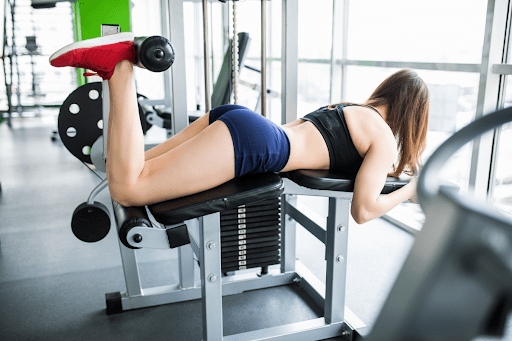
How Should You Properly Warm Up and Cool Down During Leg Training?
Properly warming up and cooling down during your leg training sessions is essential for injury prevention, optimizing performance, and promoting efficient muscle recovery.
Begin your warm-up by engaging in light cardiovascular exercises such as brisk walking, cycling, or jogging for 5-10 minutes. This increases blood flow, raises body temperature, and prepares muscles for more intense activity.
Dynamic stretching is also suitable for warming up: Follow the cardiovascular warm-up with dynamic stretching exercises that target the muscles you will work on during your leg training. Perform movements like leg swings, walking lunges, or high knees to increase the range of motion and activate the muscles gradually.
As you near the end of your leg training session, gradually reduce the intensity of your exercises. Switch to lower-intensity movements like walking or slow cycling if performing high-intensity exercises like squats or lunges.
Once your heart rate has decreased, perform static stretches targeting the major leg muscles. Also, consider using a foam roller or self-massage techniques on your legs to alleviate muscle soreness further and enhance recovery.
Top 8 Leg Exercises You Shouldn’t Ignore
Below are 8 workouts to help you strengthen your legs effectively without injury. They include:
1. Back Squats
Back squats strengthen your overall leg by working on the glutes, hamstring, quads, and lower back. The workout also promotes balance and stability.
To do a back squat workout, start with the barbell placed on a shoulder-high squat rack. Step under the rack with your feet shoulder-width apart and load the barbell across your upper back, resting it on your trapezius muscles. Your chest should be out, your back straight, and your toes slightly outward to a comfortable angle.
Begin lowering your body by pushing your hips back and bending your knees. Lower yourself until your thighs are parallel to the ground or slightly below, maintaining a neutral spine.
Keep your weight balanced on your heels and drive through them to stand back up to the starting position. Repeat for the desired number of repetitions, maintaining proper form throughout.
2. Romanian Deadlifts
The Romanian deadlift or RDL is a variation of the traditional deadlift. It is a good exercise for muscle building, physique development, and strengthening your hip and lower back muscles. It targets the glutes, hamstring, calves, and hips.
To do Romanian deadlifts, stand upright with your feet shoulder-width apart with a barbell or a pair of dumbbells in your hand, palms facing your body, using a double overhand or mixed grip. Keep your chest out and back straight.
Hinge forward at your hips while maintaining the natural arch in your lower back to lower the weights towards the floor. Keep your legs relatively straight.
Allowing the weight to follow your leg’s line, lower the barbell until you feel a stretch in your hamstrings.
The depth may vary depending on your flexibility, but aim to go as low as possible while maintaining proper form and tension in the target muscles.
Pause, then drive your hips forward to a standing position. Repeat for desired repetitions.
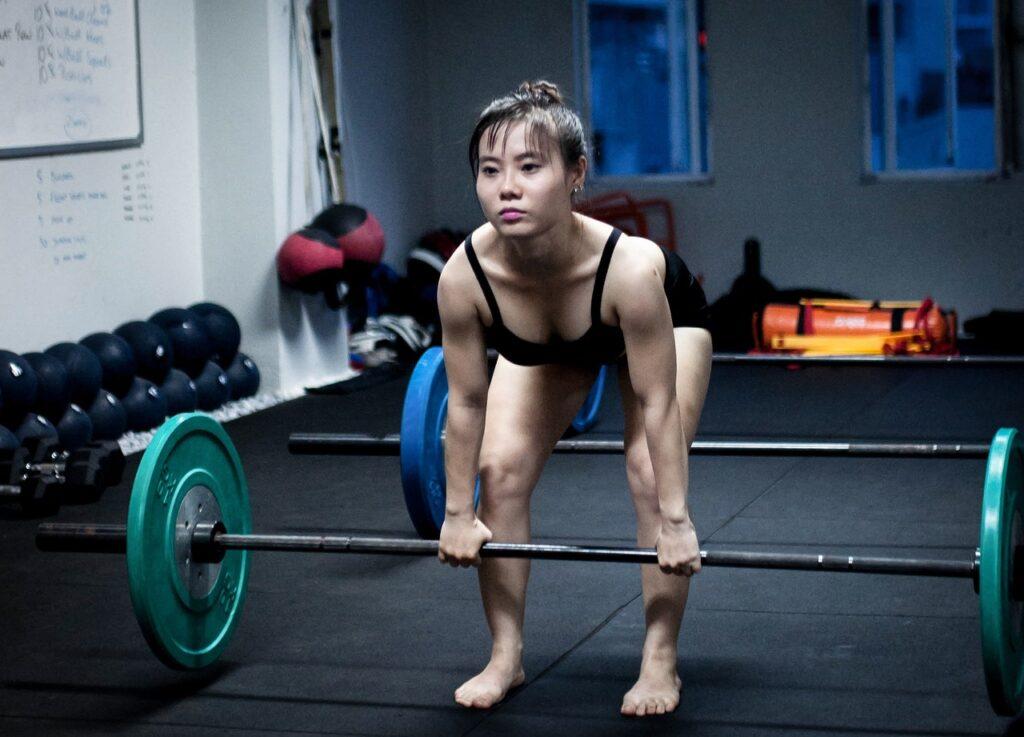
3. Reverse Lunge
The reverse lunge is a variation of the traditional lunge. It is a unilateral workout, working one side of the targeted muscles.
The reverse lunge creates balance in strength and size on either side of the target muscle where there is an imbalance. It is a controlled and stable movement as it prevents being knocked off balance by forward speed.
To perform a reverse lunge, stand tall with your feet hip-width apart and your hands on your hips or down by your sides.
Step backward with your right foot, bending both knees until your front knee is at a 90-degree angle and your back knee hovers just above the ground. Keep your upper body straight and engage your core for stability.
Push through your front heel and engage your leg muscles to raise your body back to the starting position. Repeat the movement on the other side by stepping back with your left foot and following the same steps.
4. Glute Bridge
Glute bridges strengthen your glutes and lower back muscles. It also enhances core stability and aid in improving stability and balance.
To perform glute bridges, lie flat on your back with knees bent and feet flat on the ground, hip-width apart.
Engage your core, glutes, and hamstrings, then press through your heels to lift your hips off the ground until your body forms a straight line from knees to shoulders.
Squeeze your glutes at the top and hold for a second, then lower your hips back down to the starting position in a controlled manner.
5. Front Squats
The front squat is an excellent substitute for the back squat, especially if your lower back or shoulder has an injury. It targets the front part, especially the quads and upper back.
To perform a front squat, stand with your feet shoulder-width apart, loading a barbell across the front of your shoulders ( resting on the front deltoids). Your palms should face up, and your elbows should be high, parallel to the ground.
Lower your body by bending at the knees and hips as if sitting back in a chair. Keep your core engaged, chest up, and knees tracked out.
Keep your heels on the ground, lower the barbell until your thighs parallel the floor or slightly below, and then push through your heels and extend your legs to return to the starting position.
6. Calf Raises
This workout strengthens calve muscles, stabilizes the ankle, and improves overall leg strength.
To perform calf raises, stand with your feet shoulder-width apart and toes pointing forward and slowly rise onto the balls of your feet, lifting your heels off the ground.
Hold the raised position for a moment, feeling the contraction in your calves, and then lower your heels back down to the starting position. Repeat for the desired number of repetitions.
You can perform calf raises on a step or with weights for an added challenge.
7. Hip Thrust
The hip thrust is a highly effective exercise that targets the glutes and helps to build strength, power, and stability in the hip area.
To perform a hip thrust, sit on the floor, position your upper back against a bench or step, and place a barbell or a weighted plate across your hips. Your shoulder blades should rest on the bench, with your head and neck relaxed.
Plant your feet firmly on the ground, shoulder-width apart, and bend your knees. Keep your feet close to your glutes.
Drive through your heels and push your hips upward, lifting your glutes off the ground. Squeeze your glutes at the movement’s top, then slowly lower your hips.
Repeat for the desired number of repetitions, focusing on engaging your glutes throughout the movement.
8. Step-ups
Step-up workouts target quads, hamstring, and glutes. They can help enhance balance, stability, and general leg strength while simulating vital daily activities like climbing stairs.
To perform step-ups, stand facing a sturdy step or elevated platform.
Place the right foot firmly on the step, ensuring the entire foot is in contact and the left on the ground.
Push through the heel of the foot on the step to bring your left foot to meet the right foot on the step.
Carefully step down with the opposite foot, returning to the starting position and alternate legs, and repeat for the desired number of repetitions.
Other leg workouts you may include in your leg workout routine include:
- Leg Curls
- Leg press
- Kettle swing
- Goblet squats
- Bulgarian split squat
Conclusion
The path to developing powerful quads, hamstrings, and glutes lies within your reach. Incorporating the leg exercises above into your training routine can enhance athletic performance, improve functional strength, and achieve a well-rounded lower body aesthetic.
Whether you aspire to excel in sports, enhance your overall strength, or sculpt a visually impressive physique, dedicating time and effort to building your leg muscles is crucial.






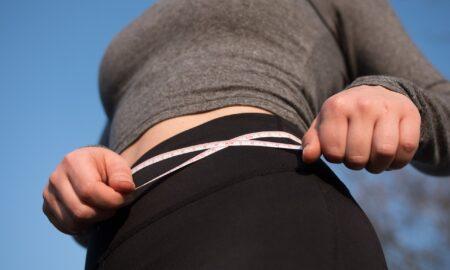
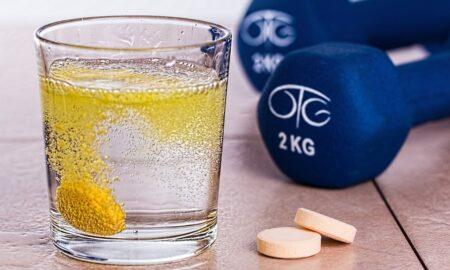














You must be logged in to post a comment Login